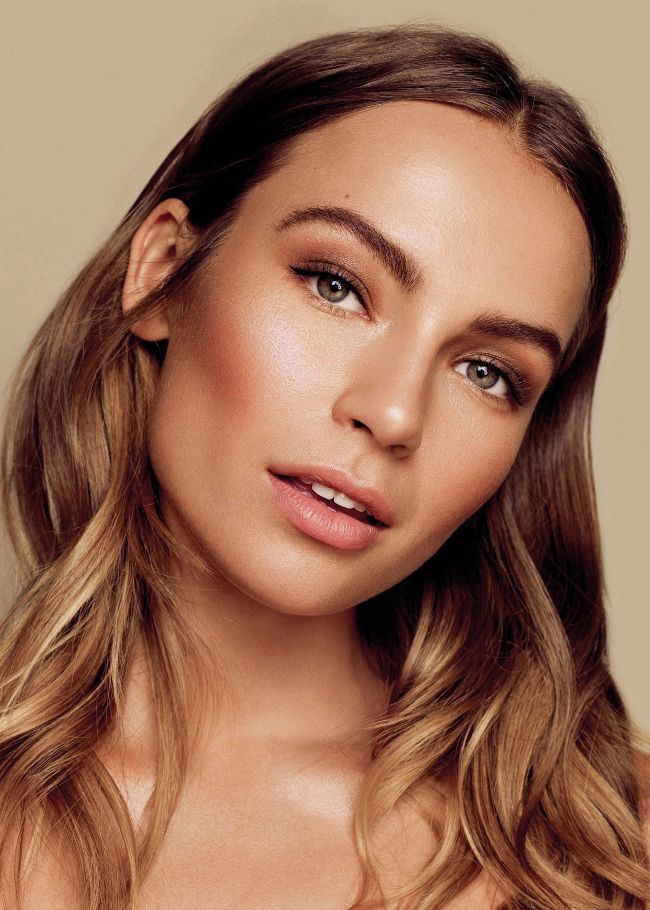Blades OF GLORY
Microblading can be dangerous in the wrong hands but pros can boost the industry’s reputation by promoting themselves as responsible technicians, writes GEORGIA SEAGO
Semi-permanent Make-up
As any advanced beauty treatment becomes popular, so do the scare story headlines that scream “botched”, “unregulated” and “dangerous”. In the case of microblading though – an invasive procedure that sees a technician implant pigment into a client’s epidermis – there is actually an important message in the bad press. The beauty industry gets enough negative attention, so the last thing we need is people claiming to be professional beauty therapists taking risky shortcuts to cash in on the trend.
With two more major brands, Finishing Touches and HD Brows, having just launched reputable and extensive microblading courses, we thought it was time to address best practice.
Research is absolutely crucial for therapists who want to offer microblading, and taking the time to investigate and compare every element across a wide range of courses and trainers will pay off in the long run. First and foremost, “make sure the company is completely legitimate, the course accredited and the certificate you’ll receive insurable”, says Tonya McGee, Finishing Touches’ micropigmentation master. “Also make sure the company offers back-up support after training”, she says. Particularly if you’re training in semi-permanent make-up for the first time, access to continued support after qualifying is vital.
Due diligence
Karen Betts, chief executive of HD Brows and K.B Pro, says other key questions to ask include: “How long is the training? What pre-training do you have to do? How long will it take to get qualified? Does the course give you a Level 4 qualification?” Many reputable microblading companies are beginning to include a Level 4 qualification in their courses because a lot of councils are refusing to give techs a licence to practise without it, in a bid to crack down on unqualified and inexperienced people providing dangerous treatments. “We’ve just added a Level 4 certificate to our training. It’s not an official requirement yet but we want to be one step ahead”, says Betts. Seek out reviews from past students and ask to see the course syllabus before committing so you can check it includes everything a robust microblading course should. Emma Apps, Brow Perfect’s trainer and microblading expert, says a course should cover “all theory behind the treatment, including health and safety, colour theory, use of pigments, choosing the correct colour and brow shape for your client, mapping of the brows and contraindications, as well as information on sterilisation and preparation, the treatment procedure, aftercare and top up sessions.”


She also stresses the importance of choosing your trainer as much as the course itself, advice echoed by Kelly Fitzmaurice, head of education at Everlasting Brows. “Ask about the tutor and how long they’ve been both teaching and educating for – they might have been teaching for 15 years but only microblading for two weeks. You want someone who’s highly skilled in both areas”, she says.
Knowledge is power
A responsible microblading technician must make sure clients understand the procedure and give them full pre and post-treatment instructions before treatment. “A lot of people don’t know it’s an invasive treatment or even that it’s actually semi-permanent. Because it’s not done with a machine, people think it’s not going to be as invasive”, says Fitzmaurice. Part of equipping clients with all of the information involves giving them the opportunity to take some time to decide if they want to go ahead with the treatment. “Clients should be able to have a free consultation where they can talk to you and go through all your work before going away to think about it. They should never be put on the spot”, says McGee.
There will likely be situations where technicians feel uncomfortable agreeing to tattoo a client. Follow Betts’s example and listen to your instincts: “I’ll send somebody away if I feel they’re too nervous or not really sure. I’ll draw on the brows and tell them to go away and think about it, show their family and friends and come back when they feel 100% certain it’s something they want to have done”, she says.
Similarly, be clear about what microblading techniques can actually achieve, and manage clients’ expectations. “For example, older ladies often wear very exaggerated pencilled brows that are not what you would be prepared to tattoo on to them”, says Brenda Griffin, director of training and business development at Beauty Concepts International (BCI). “This client would need to get used to looking at themselves differently for at least a week before you go ahead and make them permanent.”
Managing expectations
Aside from medical conditions, there are contraindications relating to previous semi-permanent make-up work that mean some clients can’t be treated. For example: “Any client who has previous tattooing work that is very dark or blue-black and cannot be camouflaged properly should be advised to get this removed by laser and then allow a period of good healing before any attempt is made to rework the brows”, says Griffin.
This is the kind of thing poorly trained technicians are likely to ignore, potentially compromising clients’ health and leaving them with unsightly brows. “Unfortunately, there’s a real lack of understanding of the skin, what’s actually in the pigment and how the two react”, says Betts, adding: “and you can’t just pick up a pigment because the colour in the bottle is what the client wants.”
Aside from bad results caused by colour, McGee says she’s recently seen a lot of badly shaped microbladed brows. “The shape is often very wrong, sometimes the brows aren’t even drawn on first; the technician is doing it freehand with the blade so the shape is all over the place”, she says.
Even more worryingly, Griffin has seen examples in which the technician has shaved the client’s brows off before microblading a “new” brow. When the hair grows back the client essentially has two sets of brows, she says. There are also the problems that come with buying unregulated pigments and using the wrong size blades. All the more reason to do things properly and promote yourself as a professional, responsible and reputable brow artist.
Sell yourself
Encourage past clients to leave reviews of your work that you can share openly with prospective clients. The same goes for images of your healed work on your social media platforms and in a printed portfolio to show clients upon consultation, which Apps says, “should be well lit and detailed to show off your work effectively.”
Betts advises making it clear that the work is yours, as unfortunately there are some technicians out there who will try to pass off others’ work as their own. “Be very professional in everything you do and never slight anybody else’s work”, she says. “Shout about where you’ve trained and the accreditation that involves, all the ongoing training and development you do, and encourage clients to check out your training provider.”
Griffin strongly advises students to obtain a Level 4 qualification with their microblading certificate to stand out from those who are not qualified. “They can then advertise themselves as qualified, insured and licensed”, she says.
Microblading troubleshooting
Five frequently asked questions answered by the experts: I’m a self-employed technician about to start offering microblading at a salon. Do I need to buy the license or should the salon cover it?
Betts says microblading technicians need their own licence to work in a salon or clinic, whereas if the tech is employed by the salon then it’s the salon owner who must obtain the licence. However, Brenda Griffin, director of training and business development at BCI, advises that the salon or clinic must also have a special treatment licence. Always check with your local council as licensing laws vary around the country.
My client’s brows aren’t healing well; they’ve turned yellow and there’s a lot of redness.
“This sounds like an infection”, says Griffin. “This could be due to mismanagement of aftercare. Ask the client if they’ve been applying post-procedure product with their fingers instead of a clean cotton bud, or perhaps they’ve been rubbing the area because it is a little itchy as it heals.” Advise the client to see a doctor, who will, if necessary, prescribe topical antibiotics.
Griffin adds: “Sometimes if the brow is blocked with too much cream the skin can’t heal properly and the cream seals in the infection. The area needs to be cleaned with sterile isotonic saline solution and left to heal.” Why is the finish on my client’s brows uneven and how can I resolve this?
Betts stresses the importance of really understanding the microblading process and explaining this to clients. “Within the first five days of the healing process, the skin can exfoliate and make the colour look uneven. Some of the colour is likely to flake off and this can happen in just some areas”, she explains.
“I explain to clients that it’s like when you paint a wall – after the first colour application it’ll look perfectly even but when it dries you’ll notice lighter patches. In that first treatment, you’ll be putting 80% of the colour in, and once it heals the client will come back for the second coat of paint. It’s a two-part procedure”, she says. How can I make sure I’m buying high-quality pigments and equipment?
Apps says it’s vital to make sure all the products you use “uphold EU specifications, with blades thoroughly sterilised”. She adds that you should be able to buy all the necessary products directly through your training company, if it’s reputable. “This should ensure your blades are constant in their shape and needle spacing and all pigments reliably consistent in colour.”
Check that the company has a number you can call for advice before and after sales, advises McGee, adding: “All pigments, needles and blades should have an expiry date and lot number that should be logged on the client’s treatment plan for insurance purposes. All companies that sell pigments should also have MSDS sheets for the ingredients that go into each pigment and these should be easily accessible.”
How do I choose the perfect shade for a client?
This is primarily about having a firm understanding of advanced colour theory, but there are some other elements that come into ideal colour choice. “Ask what shade of brow make-up they currently use, whether this is this their natural hair colour and if they will be changing it any time soon. Also find out if the client is wearing fake tan”, says McGee. “You don’t want to be trying to find a perfect shade for your client’s skin tone only to find out that it’s actually tan. For the same reason, never test pigment over make-up”, she says.
Apps reiterates that “the colour in the pigment bottle will not be a true reflection of the final colour on the eyebrows”, adding “as the skin heals following the treatment, the colour will change. Your colour choice at the top-up session will be a reflection of how the first session has healed.”